NFL Black Monday: Cleveland Browns coach Paul Brown fired by owner Art Modell 60 years ago

- Oops!Something went wrong.Please try again later.
- Oops!Something went wrong.Please try again later.
- Oops!Something went wrong.Please try again later.
- Oops!Something went wrong.Please try again later.
- Oops!Something went wrong.Please try again later.
Long before the Browns became known for firing their head coach every few years, they executed the most significant shake-up at the position in franchise history by ousting the man for whom the team is named.
The 60th anniversary of former Browns owner Art Modell removing the iconic Paul Brown as head coach and general manager falls on this Black Monday, a nervous time for many NFL staffs coming off season finales.
From a modern-day perspective, a twist lies in Modell firing Brown three and a half weeks after the 1962 season had ended, and the dismissal was doled out on a Wednesday — Jan. 9, 1963 — though Modell told the Beacon Journal back then he had made up his mind two days earlier — on a Monday.
Brown died on Aug. 5, 1991, at the age of 82. Modell died on Sept. 6, 2012, at 87.
How one fan took Paul Brown's ouster:Condoleezza Rice ripped Browns posters off her wall the day Art Modell fired Paul Brown

Their football divorce was one for the ages and changed the landscape of the sport forever because it led to Brown spearheading the formation of the Cincinnati Bengals, who started playing in 1968 and joined the NFL in 1970 when the league merged with the AFL.
“[Cleveland's] franchise and Paul Brown were so closely connected to the Northeast Ohio community, [with Brown] having been at Massillon and Ohio State and the Cleveland Browns, and they had great success,” Pro Football Hall of Fame historian Joe Horrigan said last week by phone. “I think all of that tied together made it much more personal.
“Sometimes a very popular coach for a team is fired, but he doesn't have the connection that Paul Brown had with the greater community, if you will. When Tom Landry was fired in Dallas, maybe it was the only other one comparable to me because he was so beloved.”
In a story published on Jan. 15, 1963, Beacon Journal reporters Loren Tibbals and Jack Patterson set a scene in which they persuaded Modell in his Lakewood apartment to explain why he fired Brown. Modell had been vague in the initial wave of announcements and comments a week earlier, merely stating he did what was best for the team.
Another wasted Browns season ends:Cleveland and Deshaun Watson sacked in season finale loss to Pittsburgh Steelers
What former Cleveland Browns owner Art Modell told the Beacon Journal about his decision to fire Paul Brown

Finally, Modell offered more to Tibbals and Patterson, both of whom were reporting the story while a newspaper strike in Cleveland affected the coverage.
“There were maybe 25 reasons why I fired Paul Brown,” Modell told them, “ … but only two were really important.
“First of all, in my considered opinion, I don't believe the maximum potential of the ball club was being realized.
“Secondly, it was reliably reported to me that, for various reasons, no less than seven key players — and these weren't rookies, believe me — weren't coming back next year under the same conditions.
“This was the beginning of the end for the Browns. … It was the start of the complete collapse of our club.”
Joe Thomas likely first-ballot inductee:'Why make him wait?' Joe DeLamielleure says after Joe Thomas reaches Hall of Fame final 15
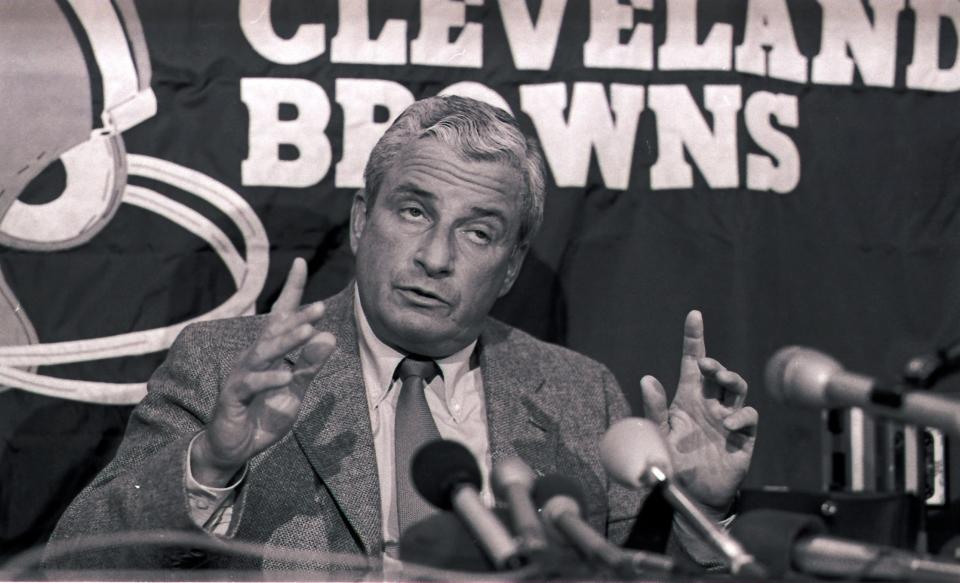
As Tibbals and Patterson tried to pry relevant answers from Modell, they cited reports of what legendary Browns running back Jim Brown had conveyed to sports writers covering the Pro Bowl on the West Coast about the firing of his coach.
Jim Brown told Melvin Durslag of the Los Angeles Herald-Examiner, “I can truthfully say I was close to the situation and I feel Modell had good reason doing what he did.” Jim Brown added the team would experience improved morale as a result of Paul Brown's departure.
“Football players,” Jim Brown said, “don't like to be treated as inferiors.”
Damar Hamlin's recovery:Browns players elated Damar Hamlin spoke to Bills in team meeting: 'It's a sigh of relief'
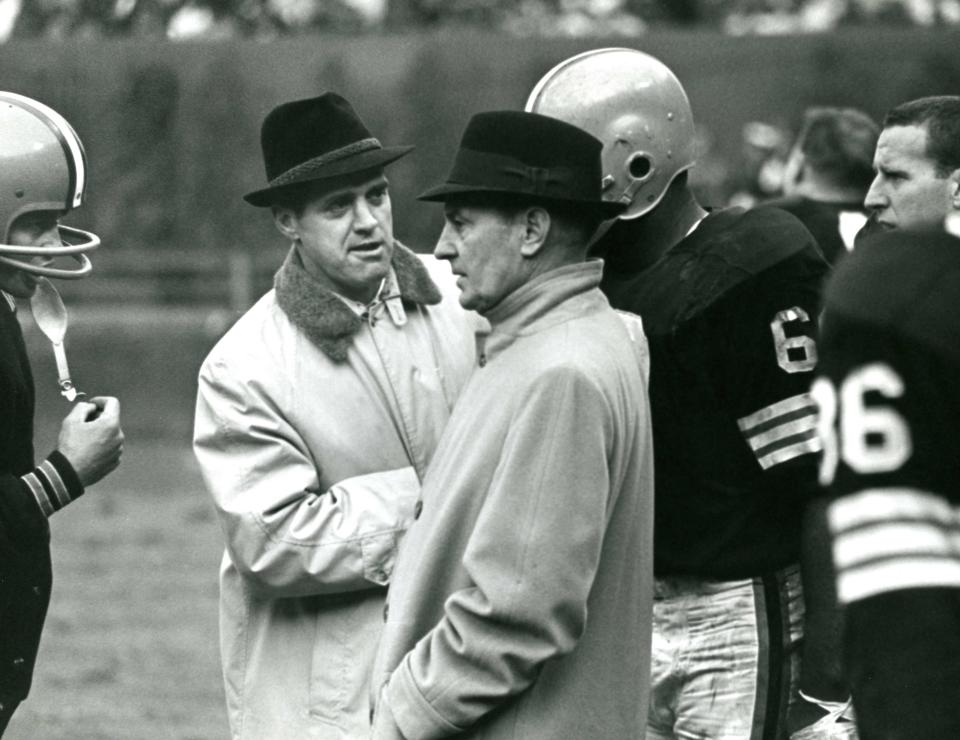
Tibbals and Patterson reported Modell opened up when they asked whether Jim Brown's feelings were his own or reflective of the entire team.
Modell broke his silence, saying player dissatisfaction with Paul Brown “presented a crisis.”
More local football history:Hall of Famer Larry Csonka honors Northeast Ohio and Stow educator in fascinating new book
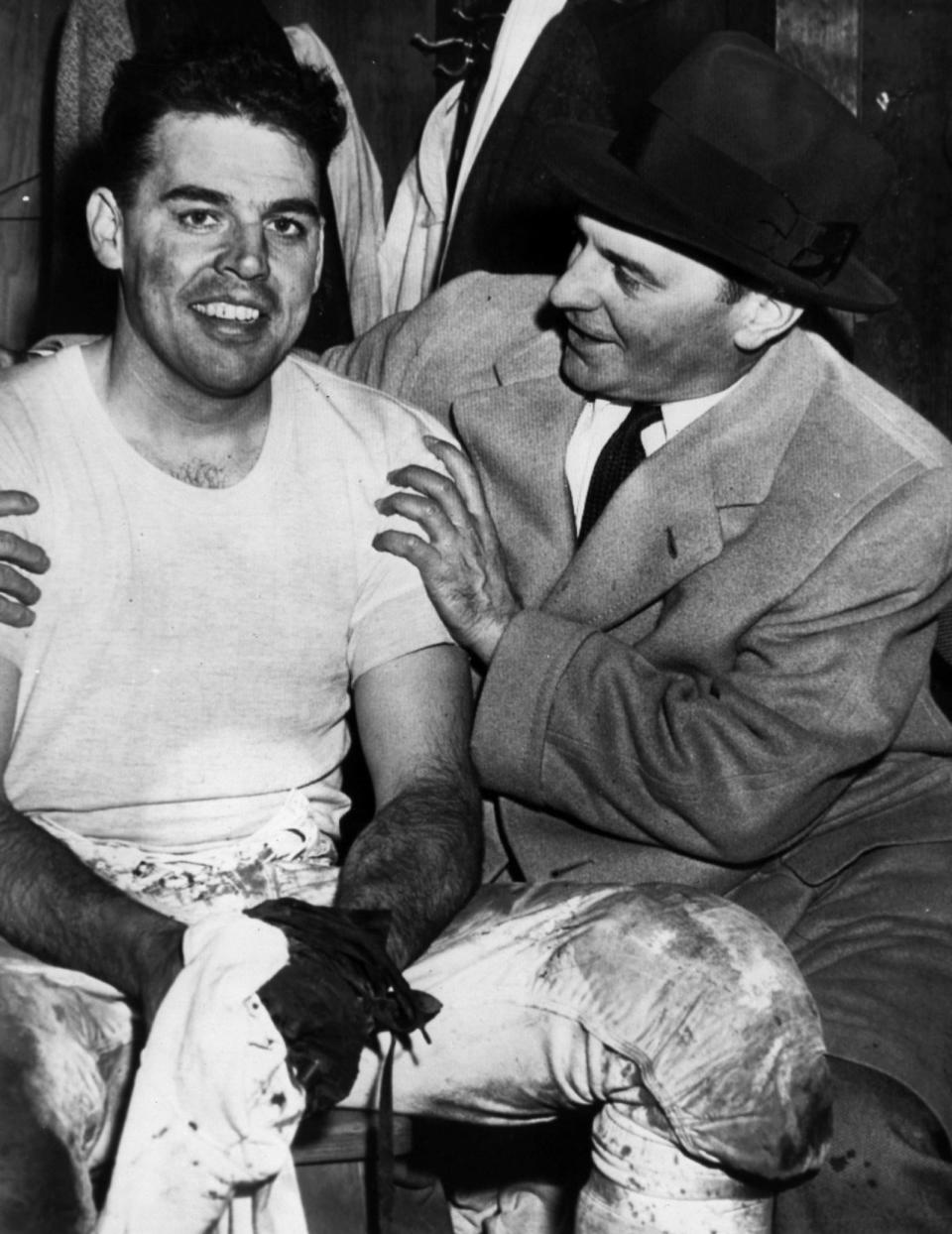
Cleveland Browns founder Paul Brown said he was shocked Art Modell fired him as coach and GM
Ten years ago, Bengals owner Mike Brown addressed many aspects of his father's firing, including Modell pointing to a threat from disgruntled players, in a Columbus Dispatch story written by Todd Jones.
“That was essentially a power struggle,” Mike Brown told Jones. “My father controlled the franchise contractually through his stature in town. Art Modell wanted to control the franchise in every way. As long as my father was there, he couldn’t.
“It was a big fight. It was a long time ago. Anymore, nobody cares, probably. I’ll always care.”
Pro Football Hall of Fame:Former Browns star Joe Thomas a finalist for the Class of 2023

In a story written by the Beacon Journal's Jim Schlemmer and published on Jan. 10, 1963, Paul Brown said Modell ousted him because the owner “wanted to take a more active part in the actual team aspects formerly assigned to me as part of my contract.”
Brown also described being forced out “as a surprise and shock.”
Cleveland Browns drama never ends:Sports betting costs legendary quarterback Bernie Kosar team-paid radio gig, source says
At the time, Brown was already a living legend at 54 years old. The founder of the Browns and their namesake, Brown had coached Cleveland to a record of 167-53-8, including 9-5 in the playoffs, in 17 seasons beginning in 1946. He guided the franchise to seven titles — four in the AAFC (1946-49) and three in the NFL (1950 and 1954-55). He went 14-0 in 1948 and had just one losing season with the Browns — 5-7 in 1956.
Before he led the Browns, Norwalk native Brown had gone 16-1-1 at Severn Prep in Maryland (1930-31), 80-8-2 at Massillon (1932-40), 18-8-1 at Ohio State (1941-43) and 15-5-2 at Great Lakes Naval Training Center (1944-45). He had captured six state titles at Massillon, his alma mater, and Ohio State's first national championship in 1942.
Modell was 37 and the president of the Browns when they finished 7-6-1 in what would be Brown's final season with the team. Modell had become the face of an ownership group of New Yorkers who bought the Browns in 1961 for about $4 million.
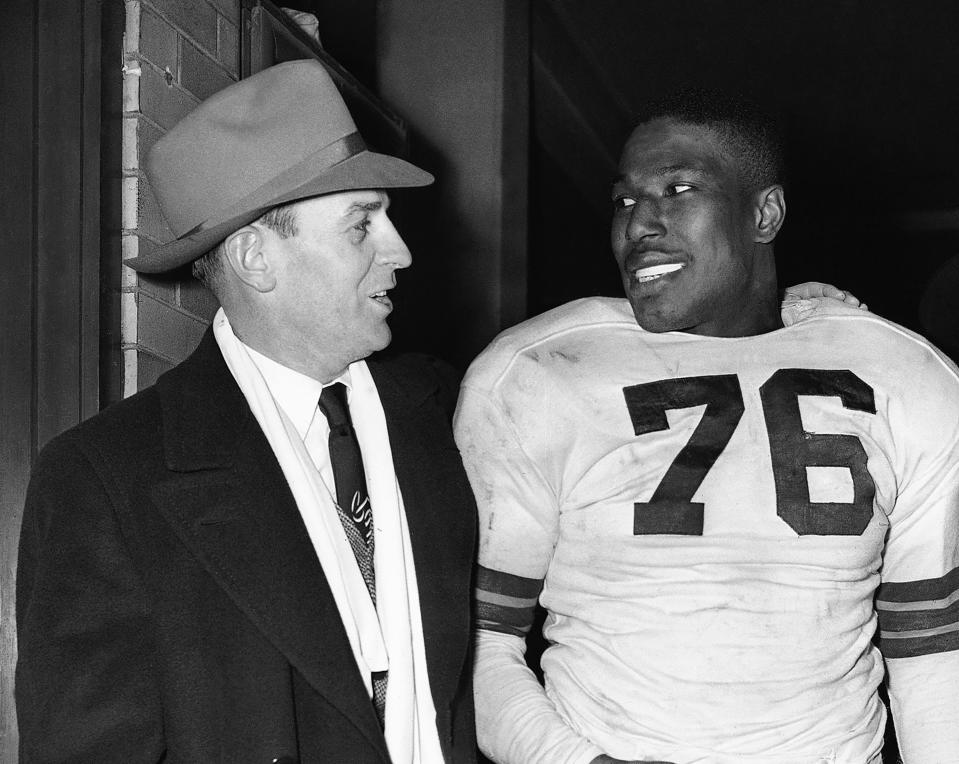
In a story published in the Beacon Journal on Jan. 11, 1963, and written by Fritz Howell, Ohio's Associated Press sports editor, Brown said NFL Commissioner Pete Rozelle unsuccessfully attempted to deter Modell from the firing.
“Mr. Modell is young and aggressive,” Brown added. “Often he's said he wanted to be a 'playing owner,' which meant he wanted to take over some of the duties which were mine under the contract. Well, he's put me on the shelf, and he's in complete charge.”
Mike Brown, 87, told Jones his father called him the day Modell discarded him.
“He said to me, ‘They took my team away from me?'” Mike Brown said. “That’s about the only time his voice ever broke when speaking with me.”
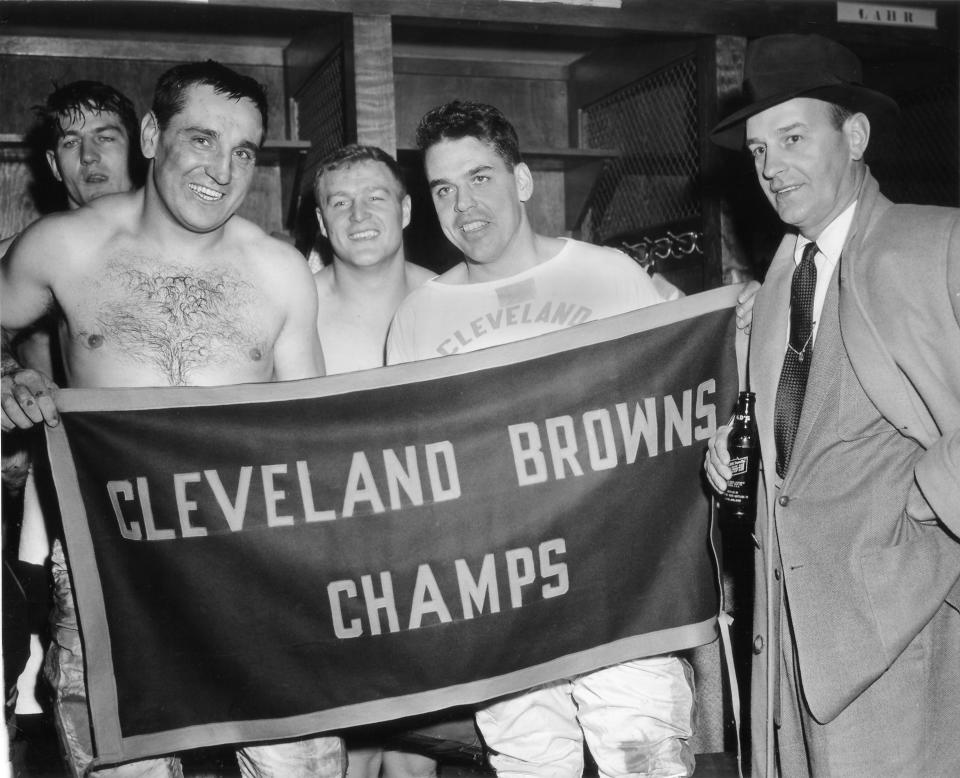
The Browns have won one championship since the firing of Paul Brown. It happened in 1964 under the guidance of his successor and former assistant Blanton Collier.
Modell won another title — Super Bowl XXXV — with the Baltimore Ravens to end the 2000 season.
In eight seasons (1968-75) as the head coach of the Bengals, Brown went 55-59-1, including 0-3 in the playoffs. After retiring as a coach in 1975, he served as Cincinnati's vice president and GM until his death.
“His firing [by Modell] was an injustice,” Mike Brown told Jones. “Getting the Bengals up and running was our redemption. It was very glorious in the old days when we played Modell’s Browns. When we won, we rejoiced in that.”
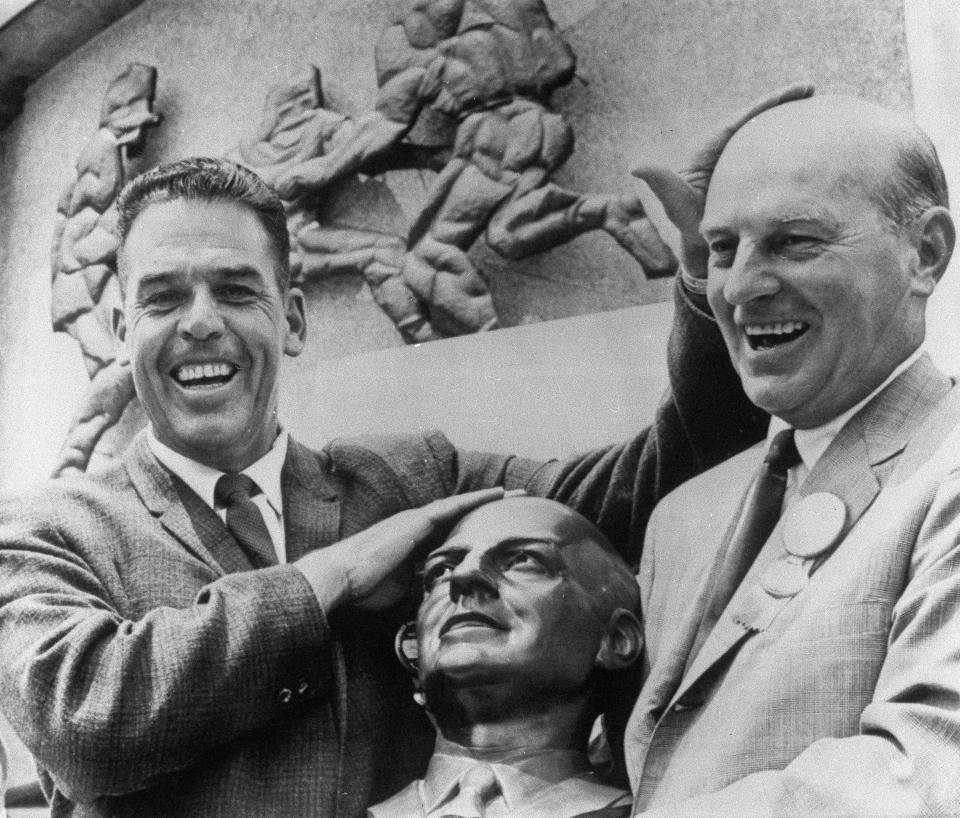
Art Modell, who moved the Browns out of Cleveland, has yet to be voted into the Pro Football Hall of Fame
Of course, Modell is most notorious in Northeast Ohio for moving the Browns to Baltimore after the 1995 season. The Browns returned to Cleveland as an expansion team in 1999.
Longtime NFL writer Vic Carucci said relocating the Browns is by far the main obstacle standing in the way of Modell being inducted into the Hall of Fame in Canton, an honor bestowed upon Paul Brown in 1967.
“The move is the primary factor in keeping him out,” Curucci, who's entering his 11th year as a Hall of Fame selector, said last week by phone.
“I'd be surprised if I heard somebody make a case against [Modell] that wasn't dominated by the move.”

Last year, the Hall of Fame asked Carucci to make the case for Modell being inducted, a request the longtime Buffalo Bills beat writer and columnist and former senior editor of the Browns fulfilled in August. The strongest arguments in favor of Modell are the contracts he negotiated as chairman of the NFL Television Committee and his role in the NFL-AFL merger.
The Browns hosted the first “Monday Night Football” game in 1970.
“Art Modell brought a knowledge and understanding of the value of entertainment and inclusiveness in the sense of family,” Horrigan said. “We're not just creating a football game for a male audience of 28 to 54 or whatever it might be. He said we can do more than that. I think that was a real turning point.”
Wyatt Teller on Browns, Bills and fans:Right guard Wyatt Teller discusses Damar Hamlin and a 'special relationship' with football
As part of the NFL-AFL merger, the Browns, Baltimore Colts and Pittsburgh Steelers agreed to join the 10 former AFL teams in the AFC, allowing for an equal number of clubs in each conference.
“That was critical,” Horrigan said. “The AFL and NFL was an unbalanced league. The NFL had more franchises than the AFL, and when the merger came through, even some of the AFL owners would say, 'We'll leave it the way it is. We want to keep our identity.' Well, they would've died.”
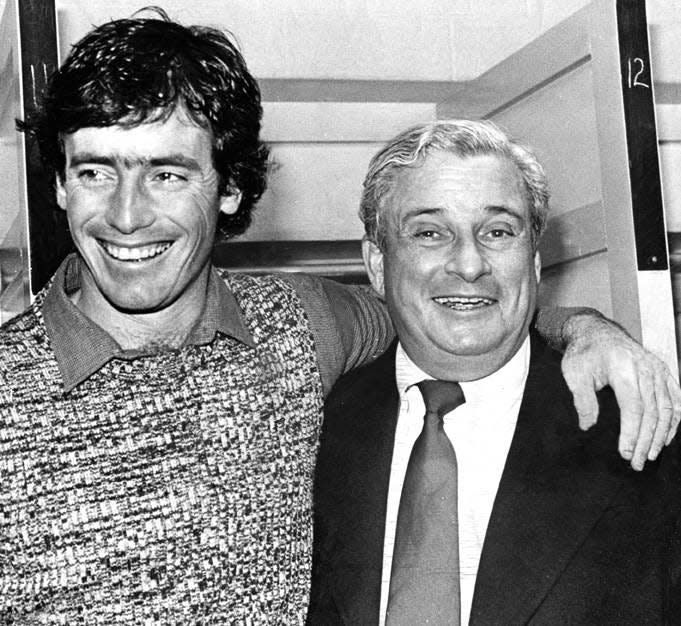
Art Modell, not the Cleveland Browns, fired New England Patriots coaching legend Bill Belichick, too
Modell was among a dozen people on the coach and contributor list considered for the Hall of Fame's 2023 class, though only former coach Don Coryell advanced as a finalist. Modell and the other unsuccessful candidates from the coach and contributor category will automatically be included on the list for consideration for the 2024 class.
Star defender matches his own milestone:Myles Garrett ties single-season Browns sack record against Pittsburgh Steelers
Carucci's duties in August included presenting Modell as a candidate to a 12-person committee and answering questions from the other selectors during discourse.
The subject of Modell dismissing two all-time great coaches — Paul Brown and Bill Belichick — wasn't even broached, Carucci said.
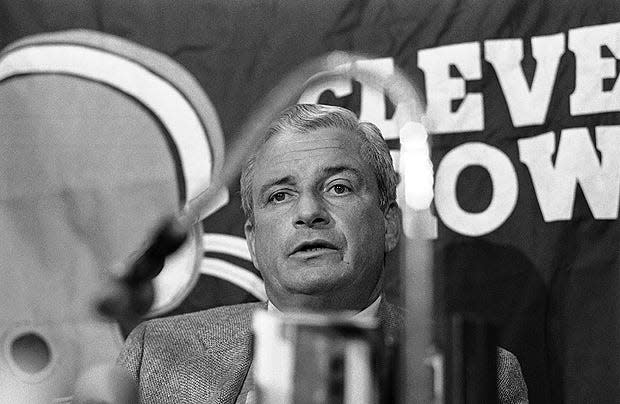
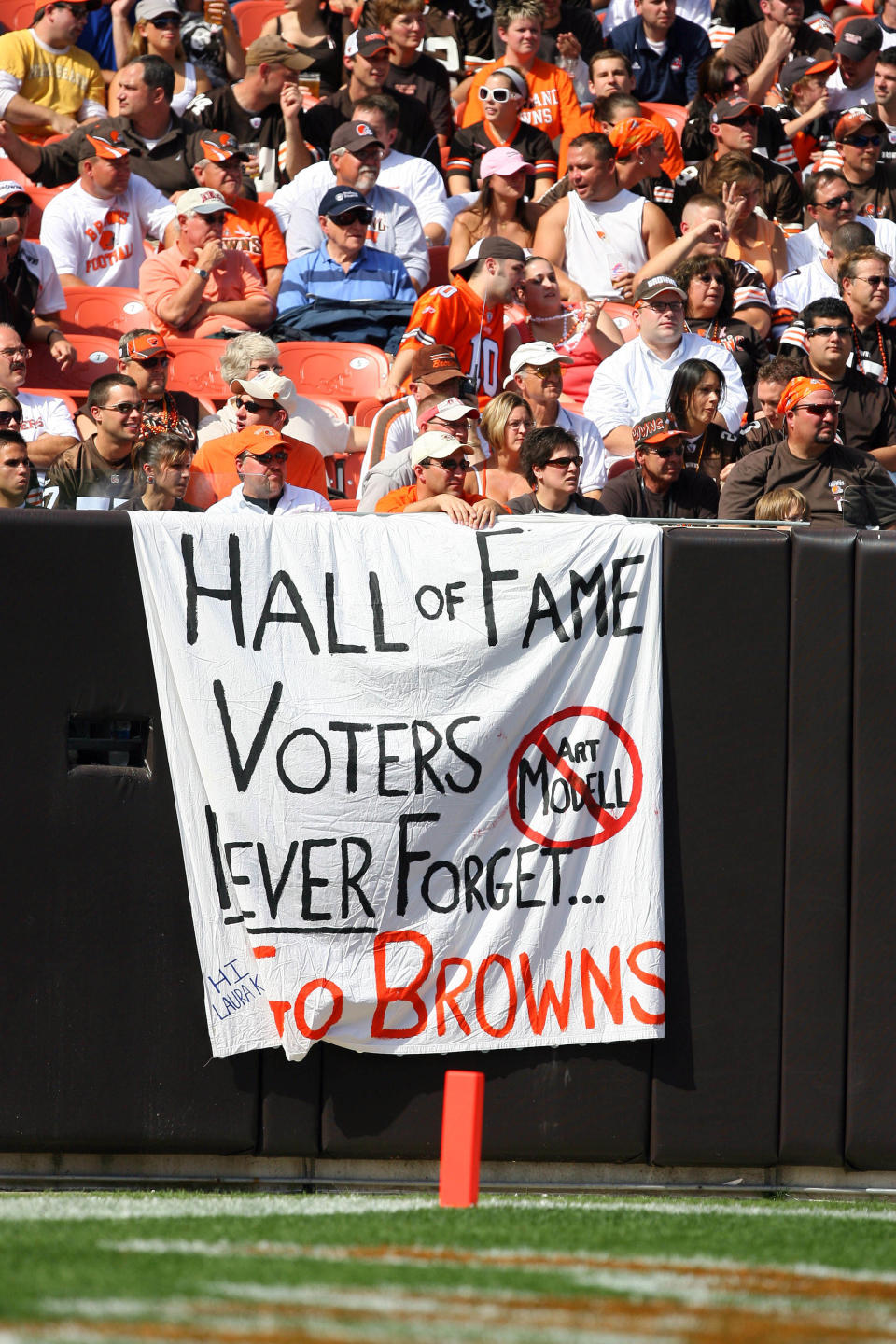
As owner of the Baltimore franchise that had yet to adopt its Ravens nickname, Modell fired Belichick on Feb. 14, 1996, then hired Ted Marchibroda as the replacement. Unlike Brown, Belichick wasn't a proven top-notch coach when Modell dumped him. He would go on to win six Super Bowls with the New England Patriots, who hired him in 2000.
“I would say the firing or not having kept Marty Schottenheimer [after the 1988 season] would be more of a bad move than having fired Bill Belichick at that time,” Horrigan said.
Nothing on Modell's resume compares with ripping the Browns away from Cleveland, but firing Brown also dramatically altered the course of history.
Nate Ulrich can be reached at nulrich@thebeaconjournal.com.
On Twitter: @ByNateUlrich.
This article originally appeared on Akron Beacon Journal: Paul Brown fired as Browns coach by Art Modell 60 years ago

